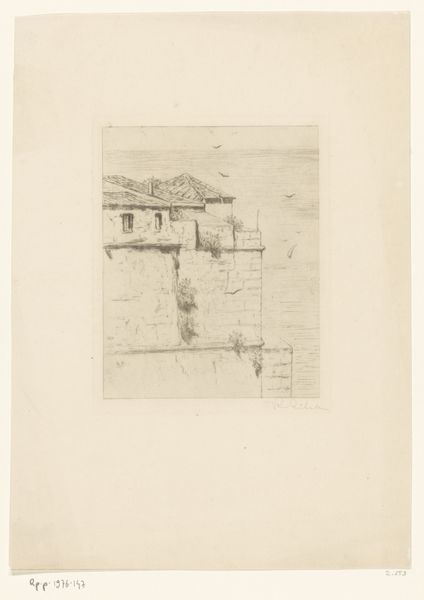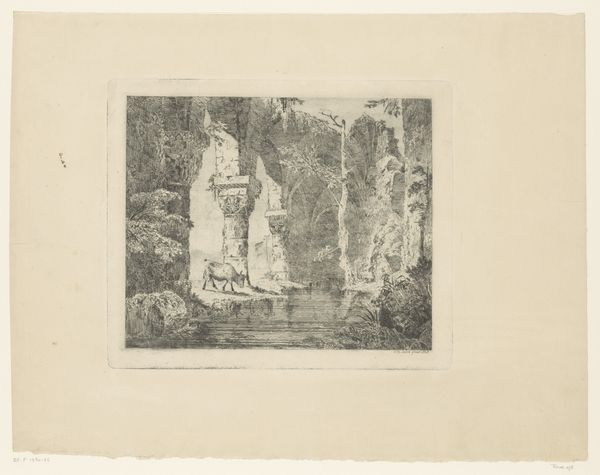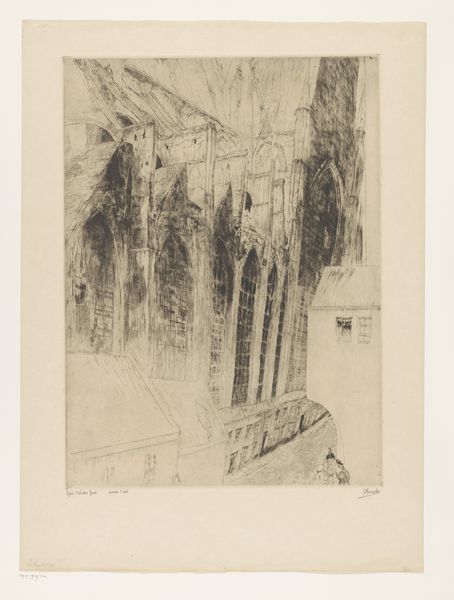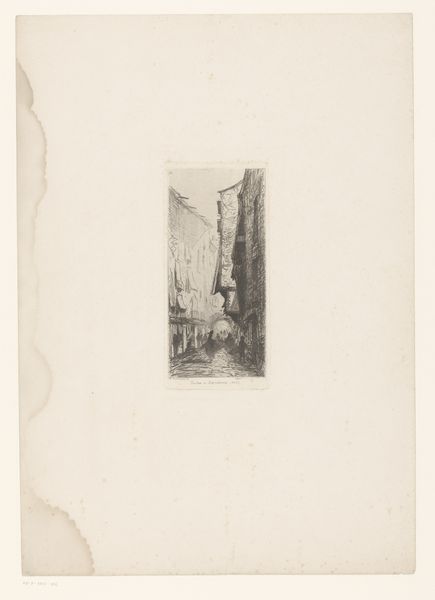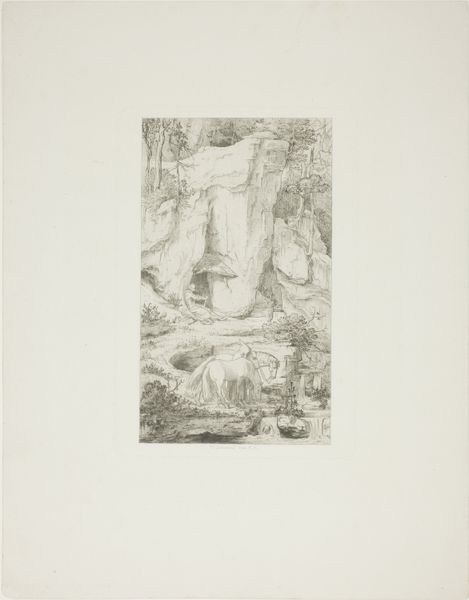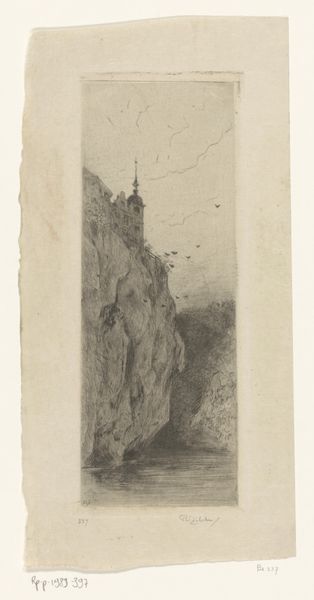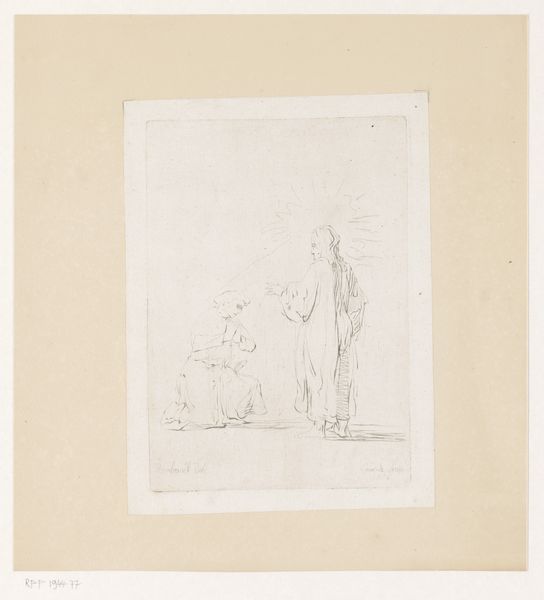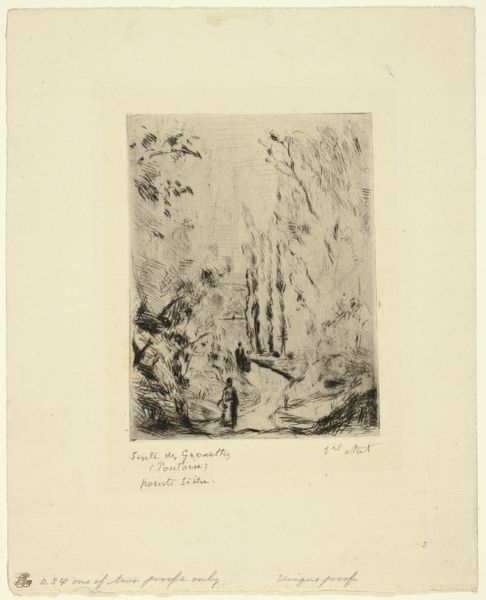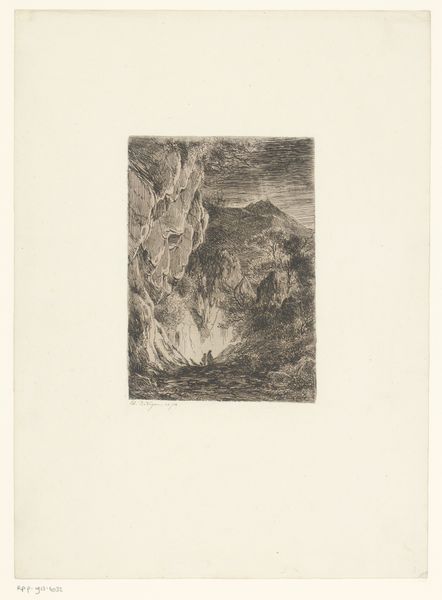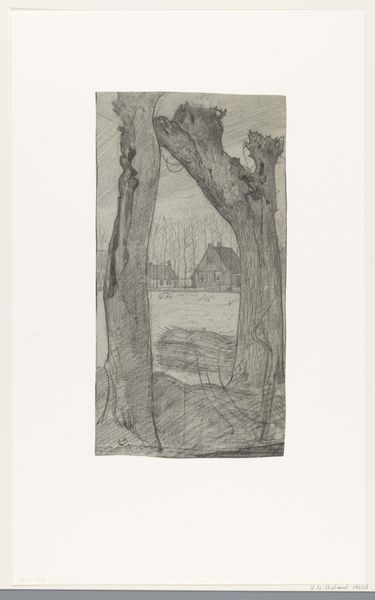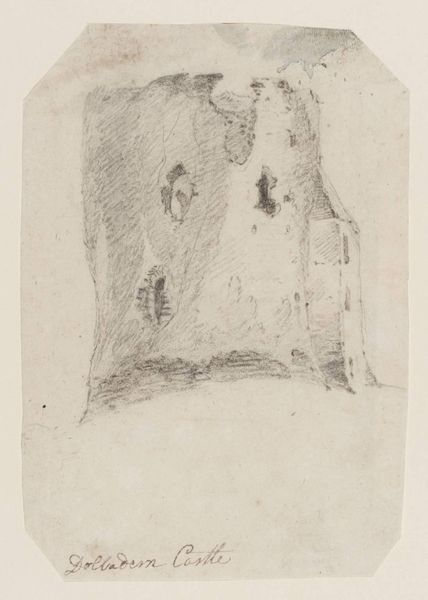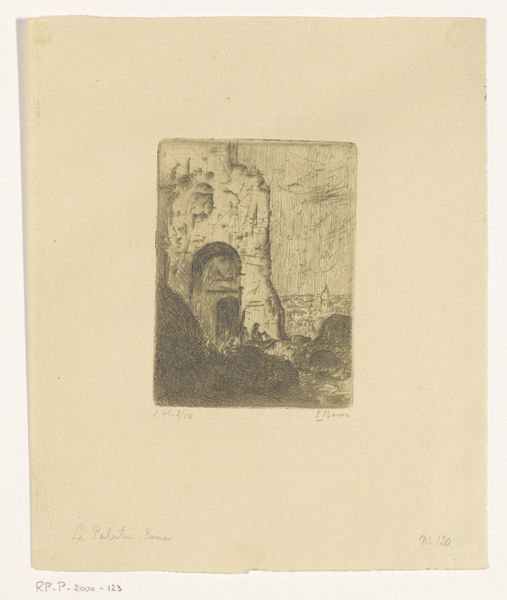
Dimensions: height 188 mm, width 90 mm
Copyright: Rijks Museum: Open Domain
Editor: We’re looking at Gustave Leheutre’s etching from 1909, “Gezicht op een straat met passanten,” or “View of a street with passers-by.” The monochromatic effect and slightly blurred lines almost feel like looking at a faded memory. What do you see in this piece, considered through the lens of its historical context? Curator: This etching offers a fascinating glimpse into urban life at the turn of the century and the democratizing effect of printmaking. Etchings like these brought images of modern life to a broader public, beyond the elite who could afford original paintings. Note the narrow street, the indistinct figures – do they represent a specific class, or is Leheutre more interested in conveying the anonymous experience of city life? Editor: That’s interesting, because I almost feel a sense of intimacy in the composition despite the anonymity. Curator: Consider also how the Impressionist style, visible in the sketch-like quality, was adopted and adapted. How does its appearance in printmaking impact the viewer versus a painted canvas shown in a salon? Was it considered a disposable artwork or an avenue for broader exposure of Impressionism’s aims? Editor: It seems to have brought art to the streets, quite literally! It almost gives us, in the present day, the impression of a vintage postcard, doesn’t it? Curator: Precisely. By democratizing access to art and depicting everyday scenes, Leheutre, even unconsciously, challenged established hierarchies within the art world and society. The fact that such artwork resides in a national gallery further complicates any original intent. Editor: So, a simple street scene on paper can become a powerful social document! It's certainly changed how I’ll look at etchings moving forward. Curator: Indeed. The "everyday" is far more interesting once it makes it into history.
Comments
No comments
Be the first to comment and join the conversation on the ultimate creative platform.
